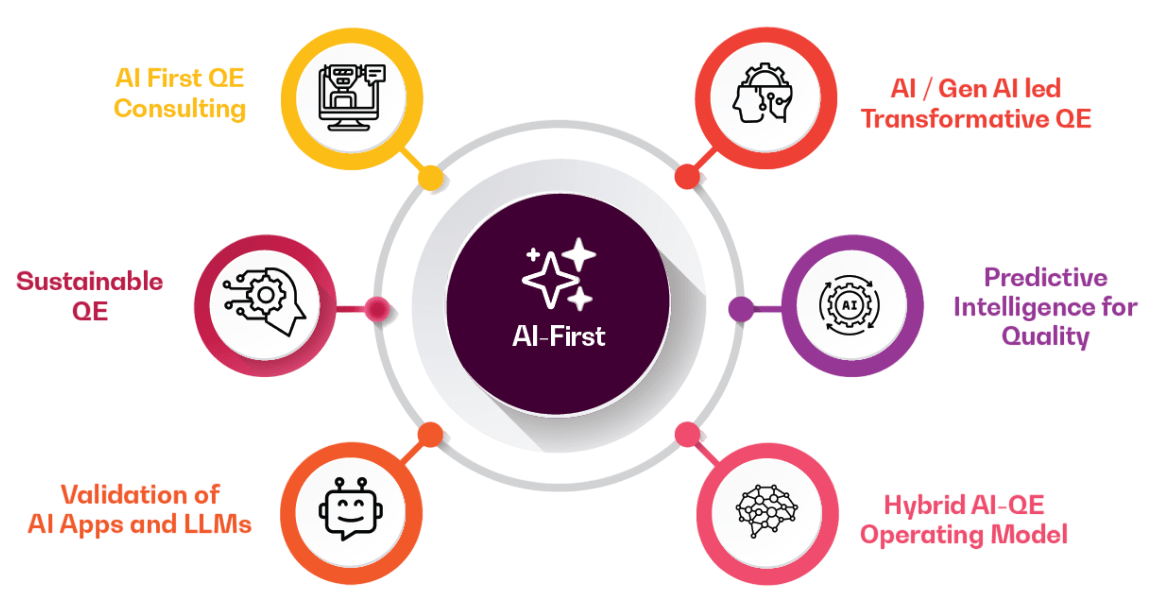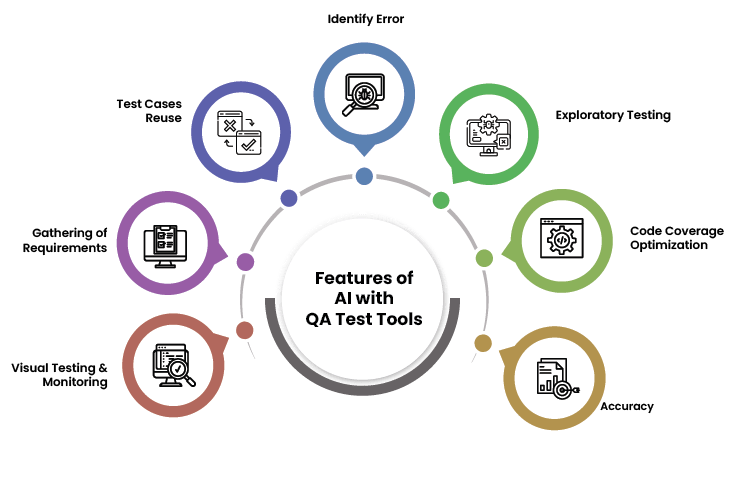
- Introduction to the Speed vs Quality Dilemma
- Key Differences Between Speed and Quality in Testing
- Why Speed Matters in Software Testing
- Benefits of Prioritizing Quality Over Speed
- Balancing Act – Achieving Both Speed and Quality
- The Role of Agile and DevOps in Resolving the Conflict
- Tools That Help Improve Both Speed and Quality
- Best Practices for Faster Yet High-Quality Testing
Introduction to the Speed vs Quality Dilemma
In today’s fast-paced digital landscape, the Speed vs Quality dilemma remains a persistent challenge for software teams aiming to deliver robust products under tight deadlines. Companies strive to release updates rapidly to stay competitive, yet they must also ensure that every release meets user expectations and business requirements. This tension often puts quality assurance testing teams in a tough spot pushed to reduce testing time without compromising the reliability of the product. As software complexity increases, software quality assurance becomes even more critical in identifying defects early and ensuring stability across devices and platforms. Relying solely on manual testing is no longer sustainable; this is where automated testing software plays a crucial role. It accelerates testing cycles, supports continuous integration, and ensures consistent coverage. However, while automation brings speed, it cannot entirely replace human judgment, especially for exploratory and usability testing. The key lies in striking a balance leveraging automation for repetitive tasks while allowing QA professionals to focus on critical user-facing areas. Ultimately, embracing a smart testing strategy that blends speed with thorough quality checks is essential for delivering software that is both fast to market and high in quality, helping businesses thrive without sacrificing user trust.
Are You Interested in Learning More About Software Testing? Sign Up For Our Software Testing Certification Training Today!
Key Differences Between Speed and Quality in Testing
- Objective Focus: Speed emphasizes quick releases and faster time-to-market, while quality prioritizes thorough QA testing to ensure the software is bug-free and user-ready.
- Testing Approach: Speed-driven teams often lean heavily on automation testing to save time. On the other hand, quality-centric teams use both automation and manual methods like black box testing to validate different layers of the application.
- Tool Preference: Fast-paced projects may use lightweight tools, whereas quality-focused testing might involve comprehensive tools like Tosca software, which supports model-based and end-to-end test automation.
Balancing speed and quality in testing is a critical aspect of software development. While speed focuses on delivering products quickly, quality ensures they function reliably and meet user expectations. Achieving both simultaneously is challenging but essential for long-term success. Here are some key differences between speed and quality in testing:

- Error Tolerance: Speed-centric approaches may accept minor issues post-release, assuming patches can follow. Quality-focused testing aims to minimize all risks before deployment.
- Resource Allocation: Speed favors minimal testing teams and tight cycles, while quality testing typically requires more time, skilled testers, and diverse scenarios.
- User Experience Impact: While faster releases may improve initial customer access, broadband quality and overall performance are better preserved with in-depth quality testing practices.
Why Speed Matters in Software Testing
In the competitive world of software development, speed plays a crucial role in determining a product’s success. With rapidly changing user demands and market dynamics, delivering software quickly is no longer a luxury but a necessity. This is where speed in software testing becomes vital it enables faster releases, quicker feedback loops, and early detection of bugs, all of which contribute to streamlined development cycles. By integrating automated testing software, teams can significantly reduce the time spent on repetitive tasks and ensure continuous validation without compromising efficiency. However, speed doesn’t mean skipping quality; in fact, when executed properly, fast testing complements quality assurance testing by making it more agile and responsive. A well-orchestrated testing process ensures that changes are tested quickly, integrated seamlessly, and pushed to production confidently. Moreover, with the support of software quality assurance practices, rapid testing still adheres to industry standards and user expectations. Businesses that prioritize speed in testing are better positioned to respond to customer needs, stay ahead of competitors, and maintain product relevance in a fast-moving digital ecosystem. Ultimately, striking the right balance between speed and quality is the key to delivering robust and timely software solutions.
To Explore Software Testing in Depth, Check Out Our Comprehensive Software Testing Training Course To Gain Insights From Our Experts!
Benefits of Prioritizing Quality Over Speed
- Fewer Defects Post-Release: Prioritizing thorough QA testing reduces the chances of bugs slipping into production, ensuring a more stable product for end users.
- Enhanced User Experience: High-quality software contributes to consistent performance and reliability, improving user satisfaction just like maintaining strong broadband quality keeps users connected and happy.
- Improved Test Coverage: Quality-focused teams use a mix of methods, including black box testing, to validate functionality, performance, and usability from the user’s perspective.
In software development, while fast delivery is important, prioritizing quality over speed ensures long-term stability, user satisfaction, and fewer post-release issues. Delivering a product quickly may offer short-term gains, but high-quality software builds trust and sustains growth. Here are six key benefits of focusing on quality first:

- Efficient Use of Automation: Emphasizing quality allows smart integration of automation testing to handle repetitive tasks efficiently without cutting corners on test depth.
- Robust Test Management Tools: Using tools like Tosca software, quality-driven teams can manage test cases better, increase accuracy, and ensure traceability across the development lifecycle.
- Reduced Technical Debt: Prioritizing quality minimizes the need for frequent hotfixes and patches, resulting in lower maintenance costs and more predictable release schedules.
Balancing Act – Achieving Both Speed and Quality
Achieving the perfect balance between speed and quality in software testing is a continuous challenge that modern development teams face. In a market driven by rapid innovation and user expectations, delivering software quickly is vital but not at the expense of stability and user satisfaction. The key lies in adopting smart practices that enable both. Leveraging automation testing helps accelerate repetitive tasks without compromising test accuracy or depth. Meanwhile, maintaining rigorous QA testing standards ensures that every release meets functional and performance benchmarks. Using tools like Tosca software, teams can streamline test management, increase test coverage, and support agile workflows with minimal manual intervention. However, automation alone isn’t enough; critical areas still require manual techniques like black box testing to validate real-world user scenarios. Just as users expect consistent broadband quality from their internet service, they also demand reliable performance from software applications making quality just as important as speed. Organizations that successfully balance both can release products faster, with fewer defects, better user experiences, and stronger market competitiveness. The balance isn’t about choosing one over the other, it’s about integrating both into a seamless, efficient testing strategy that drives continuous delivery without sacrificing excellence.
The Role of Agile and DevOps in Resolving the Conflict
- Continuous Integration and Delivery: DevOps enables faster releases through CI/CD pipelines, ensuring that updates are deployed regularly without compromising software quality assurance.
- Early and Frequent Testing: Agile encourages testing from the early stages of development, allowing defects to be caught early and reducing costly fixes later.
- Collaboration Between Teams: Both Agile and DevOps foster better communication among developers, testers, and operations, aligning efforts toward a common quality goal.
- Integration of Automated Testing Tools: The use of automated testing software within DevOps pipelines speeds up test cycles while maintaining accuracy and consistency.
- Feedback-Driven Development: Agile promotes regular feedback from stakeholders and users, allowing teams to make improvements before final releases.
- Enhanced QA Focus: Quality isn’t a phase it’s continuous. Agile and DevOps embed quality assurance testing into every sprint, ensuring the end product meets both speed and reliability expectations.
In modern software development, the tension between speed and quality often creates friction within teams. Agile and DevOps methodologies help resolve this conflict by promoting collaboration, continuous feedback, and streamlined workflows. These practices not only accelerate delivery but also embed quality assurance testing throughout the development lifecycle. Here’s how Agile and DevOps contribute to balancing speed and quality:
Tools That Help Improve Both Speed and Quality
Improving both speed and quality in software testing requires the right combination of tools that streamline processes without compromising accuracy. As demands for faster delivery grow, development teams turn to smart solutions that support continuous integration, real-time feedback, and end-to-end test coverage. Automation testing tools play a critical role by reducing the time spent on repetitive test cases while increasing consistency across builds. For example, Tosca software is widely used for model-based automation, helping teams create maintainable tests that adapt quickly to changes. Additionally, traditional techniques like black box testing remain essential for evaluating user-facing features without knowledge of internal code, ensuring a holistic quality check. Effective tools also enable better QA testing management by providing visibility into test coverage, defect tracking, and performance analysis. In fast-paced environments, it’s not just about speed; users also expect seamless performance, much like the reliability they demand from broadband quality in their everyday digital experiences. By combining automation, manual insights, and robust test management platforms, organizations can achieve a fine balance delivering software that’s both quick to market and strong in quality, ensuring user satisfaction and long-term success.
Want to Pursue a Software Testing Master’s Degree? Enroll For Software Testing Master Program Course Today!
Best Practices for Faster Yet High-Quality Testing
Achieving faster yet high-quality testing requires a strategic blend of process optimization, intelligent tool usage, and a quality-first mindset. One of the best practices is to shift left by involving quality assurance testing early in the development cycle, allowing teams to detect and fix bugs before they escalate. Implementing automated testing software is essential for accelerating regression, smoke, and performance testing, enabling frequent code validations without manual delays. However, automation should complement not replace manual efforts, especially for exploratory and usability scenarios. Maintaining clear test cases, frequent code reviews, and version control further streamlines the testing process. Incorporating continuous integration and delivery (CI/CD) pipelines ensures that code changes are automatically tested and deployed, improving both speed and reliability. Additionally, a strong focus on software quality assurance practices, such as defining clear acceptance criteria and maintaining consistent test environments, minimizes the risk of unexpected failures. Collaboration across development, QA, and operations teams is equally important to ensure that everyone aligns on quality goals and timelines. By embedding testing into every stage of development and leveraging the right tools and practices, teams can deliver software that is both quick to market and consistently high in quality.

